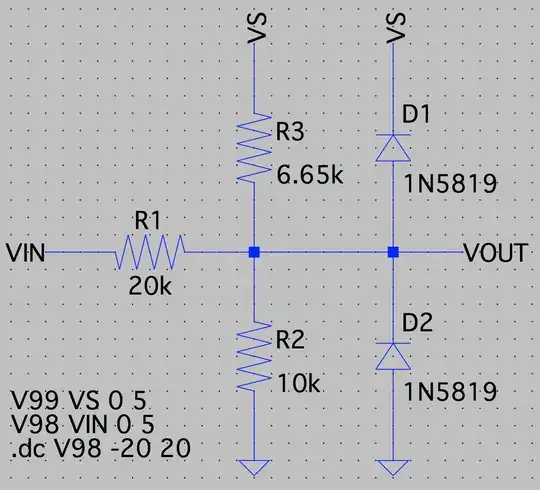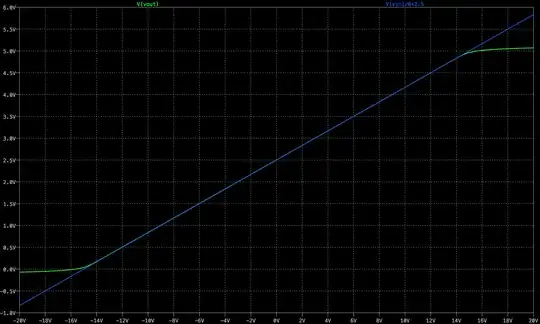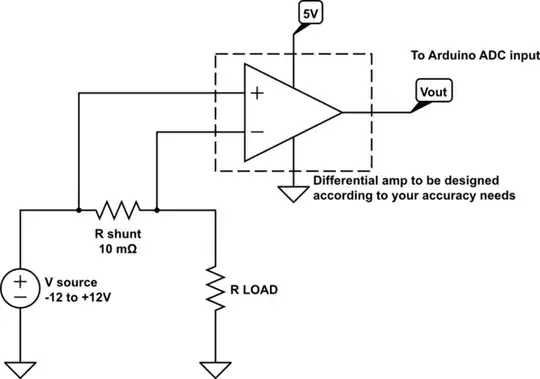I'm making a -12 to +12V DC regulated power supply, on which I want to measure voltage and current with Arduino (through a voltage divider, of course).
I'm not sure, how to either detect nor measure negative voltage. I could "detect" it via a Schottky diode, but I'd get about 0.3V voltage drop, but that's not what I want, because any voltage between 0.0V and -0.3V wouldn't be measured. I want also to be able to measure positive and negative voltage on the same Arduino analog input pin.
And furthermore, how to measure current, flowing into both ways? (not an AC current, but will change during operation).
I will make additional PCB for this application, so size and number of components isn't important at all.


